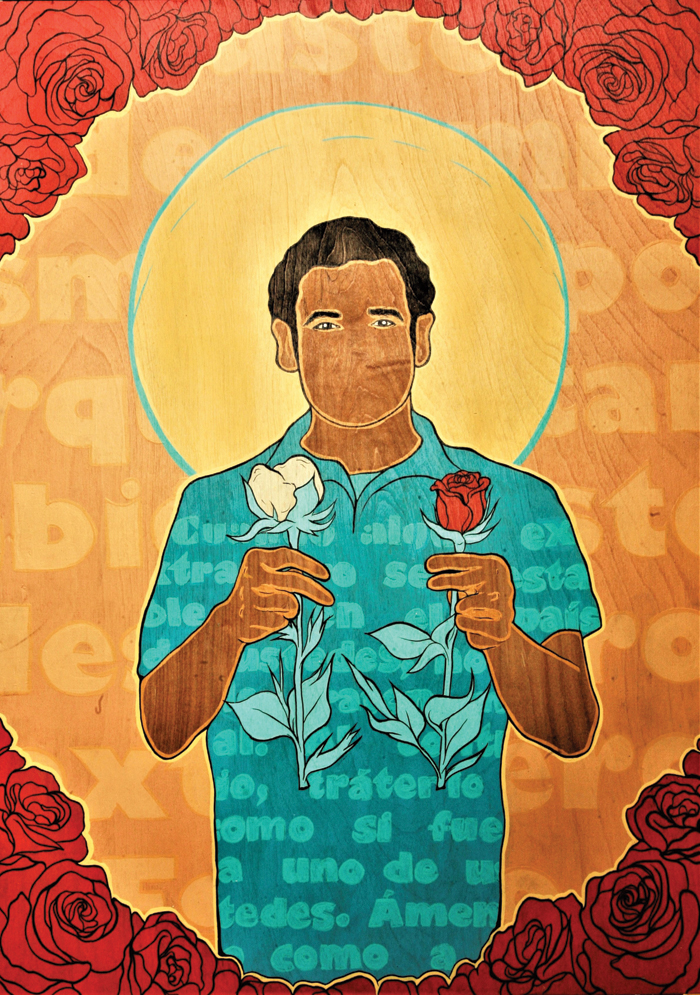The psalmist prophetically proclaims on the second Sunday of Advent, “Justice shall flourish in his time, and fullness of peace forever” (Ps. 72). We may cynically respond in our increasingly polarized and uncharitable times, “Justice and peace for whom?” We may be tempted to respond in such a manner because we are often confronted with situations that speak more of injustice and human suffering.
The idyllic reality so beautifully portrayed in the first reading from Isaiah—where all the vulnerable are safe from harm and enemies become good neighbors—seems very far away. How long must we wait for justice and peace to blossom and flourish?
Blooming flowers frame the rose-colored prophetic vision of Danielle Sierra’s compelling painting Bracero (Leviticus 19:34). The image is filled with evocative symbols. Red roses are a multivalent Christian symbol, representing love, the sacrificial self-giving of martyrdom, and the Blessed Virgin Mary, among other things. One may even think more specifically of Our Lady of Guadalupe and her miraculous roses offered as a catalyst for the unification of people.
The golden halo that surrounds the central figure’s head symbolizes holiness or sainthood. The offering of flowers is a symbolic offering of peace, friendship, reconciliation, or love. Even the choices of color for the flowers being offered have symbolic significance. Liturgically, red is associated with martyrdom, Good Friday, and Pentecost, while white is associated with resurrection and new life. Seen through a Christian lens, Sierra’s many symbols stir the prophetic imagination.

Bracero (Leviticus 19:34), Danielle Sierra, 2016, acrylic on panel, 28 x 20 in.
Sierra opens a more explicit Judeo-Christian reading of this image with the title Bracero (Leviticus 19:34). Leviticus 19:34 reads, “The alien who resides with you shall be to you as the citizen among you; you shall love the alien as yourself; for you were aliens in the land of Egypt: I am the Lord your God.”
In this instance the one to be loved and treated “as the citizen among you” is the bracero, or day laborer. The title evokes the agricultural day laborers from Mexico who were given work in the United States during and after World War II. But its message is not purely historical, as the U.S. bishops and Pope Francis continually remind us of the values of welcoming and attending to the God-given dignity of immigrants fleeing violence, debilitating poverty, and persecution.
Can we see Jesus in the stranger? Can we see Jesus arriving in our midst? Can we hear Jesus in the request for asylum at borders around the world? Or is his voice silenced? Is he rendered unable to speak, as in this painting?
This reflection is one of four meditations on various works of art for Advent. The meditations will be collected here as they are published.
These essays are also published in our December 2019 issue of U.S. Catholic (Vol. 84, No. 12, pages 12–17). Click here to subscribe to the magazine.












Add comment